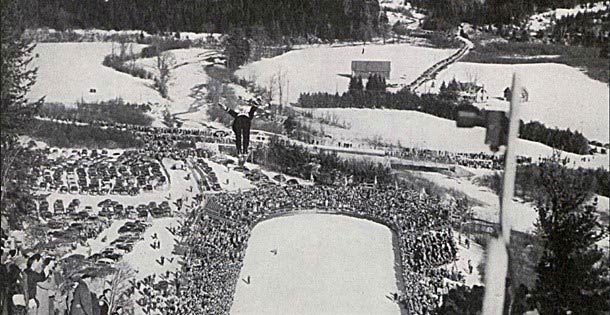In this 1950 article, the Post interviewed brave – or is it foolish? – ski jumper Art Devlin, including the memorable time that, in a bid for a record, he overjumped the ski hill:
He piled into the snow with a spine-jarring crash that broke both of his skis, pulled every tendon and ligament in his right leg, and reduced the cartilage to mush. On his trip through the air, he traveled 286 feet. It was a record, all right. But it didn’t count, because he fell when he landed.
The article details Devlin’s incredible skill, his derring-do, and his ability to attract large crowds “whether hungry for excitement or determined to find out why ski jumpers don’t kill themselves.”
While modern fans also marvel at the fearlessness of ski jumpers, some things have changed since 1950. Many jumpers used to turn to liquid courage:
Two of these worthies, who shall remain unnamed, could not jump effectively without a little stimulant. Each would carry a half pint of whisky to the top of the hill, drain it while waiting to start, and then kick off into space surrounded by a rosy haze of bourbon.
(Despite Devlin’s boldness on the hill, he was a straight arrow, sticking to soda pop and early bedtimes.)
Earlier that year, Devlin had finished fifth in the individual large hill at the 1950 FIS Nordic World Ski Championships in Lake Placid. He would go on to compete in the 1952 and 1956 Olympics. While he didn’t medal, he never gave up his love for “flight without wings.”

Become a Saturday Evening Post member and enjoy unlimited access. Subscribe now



